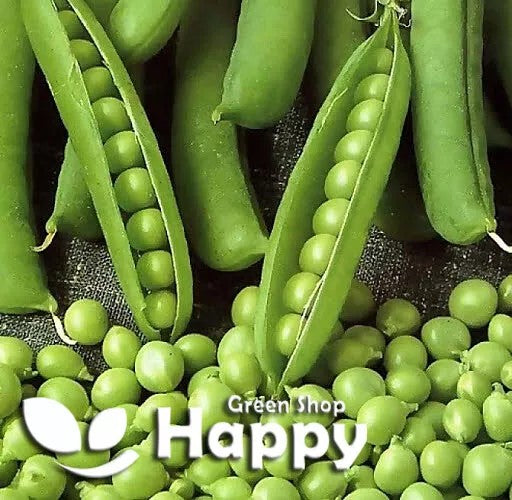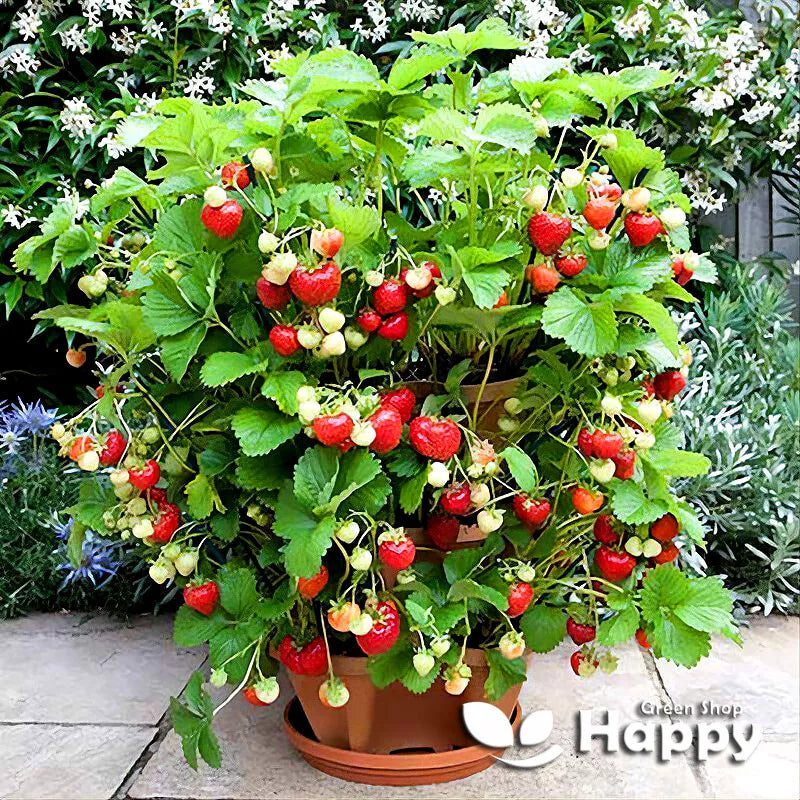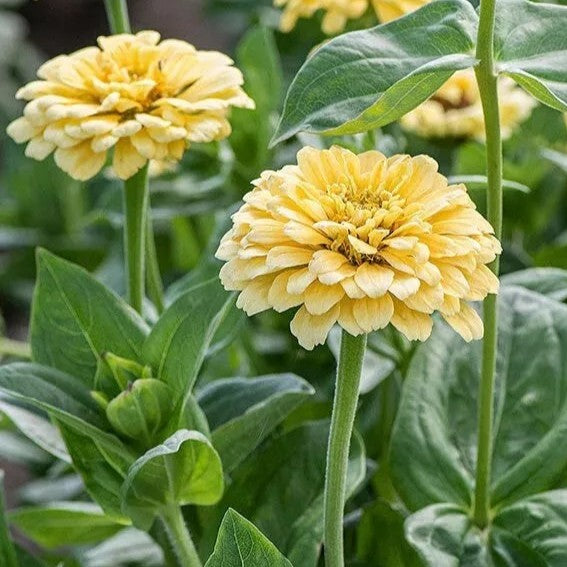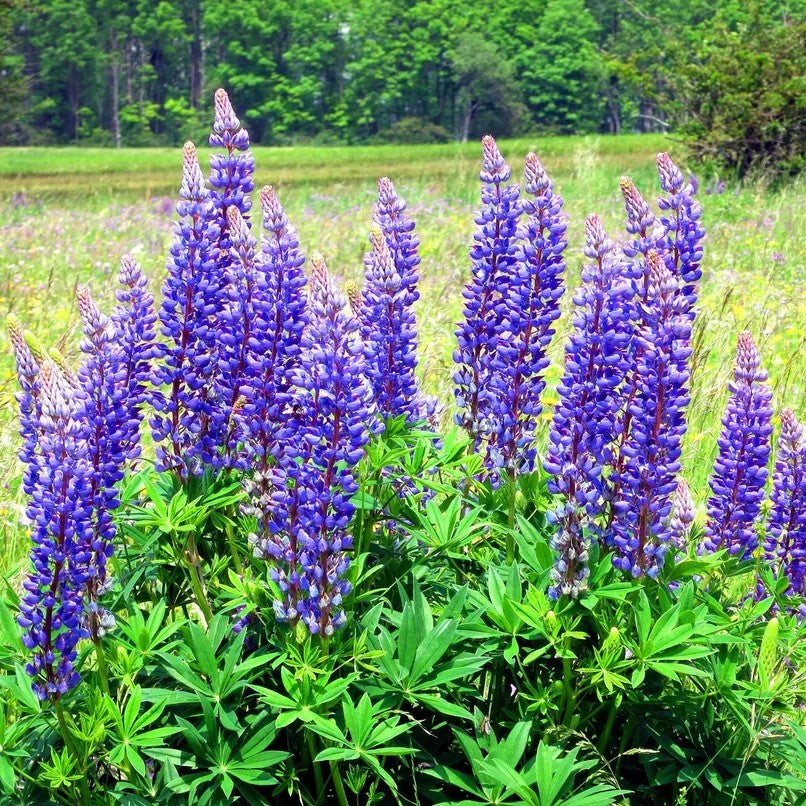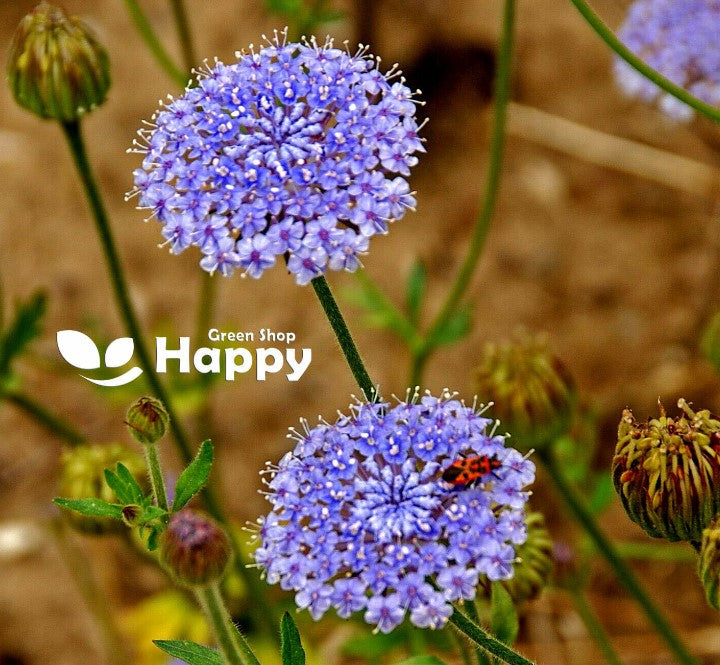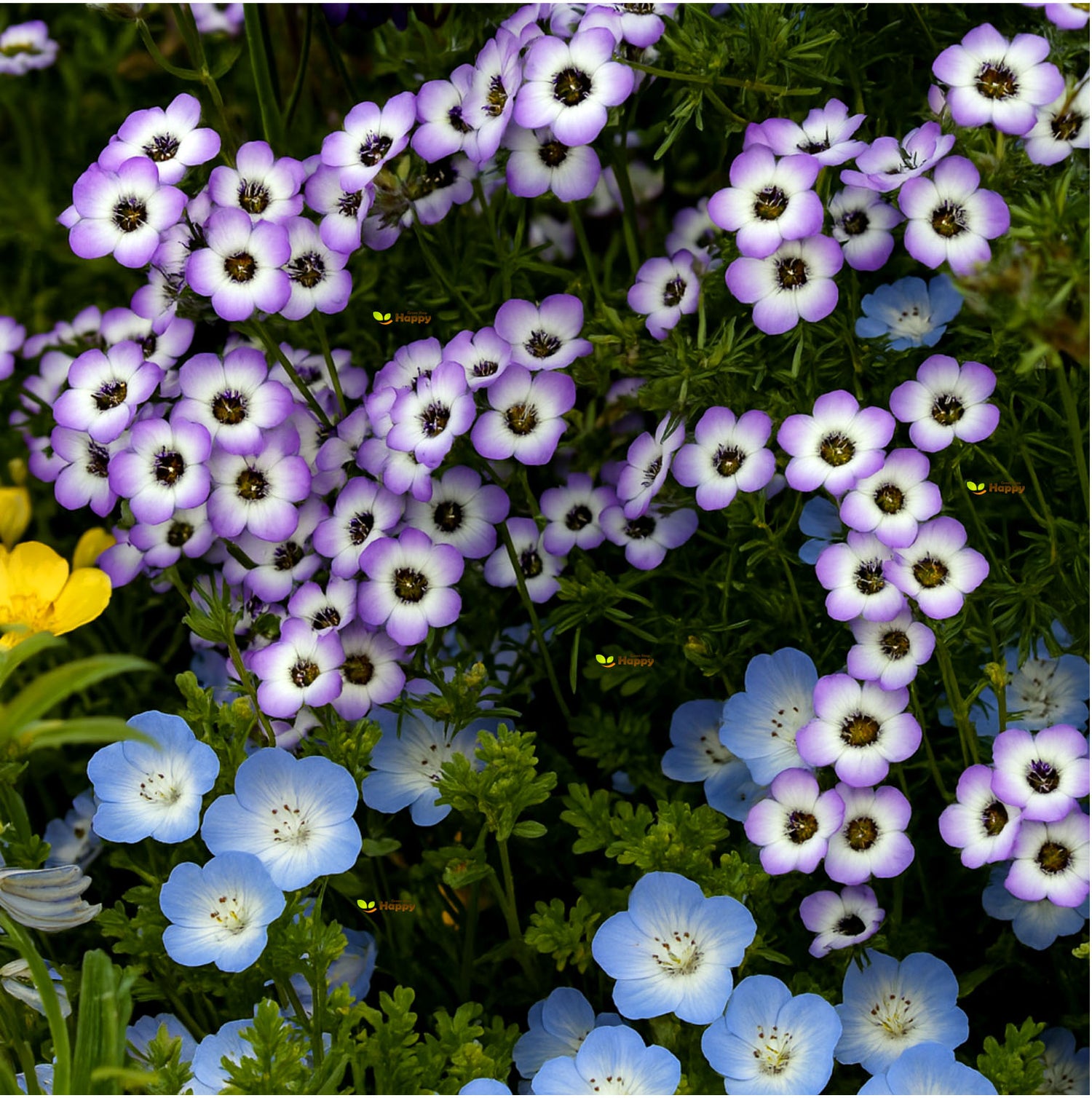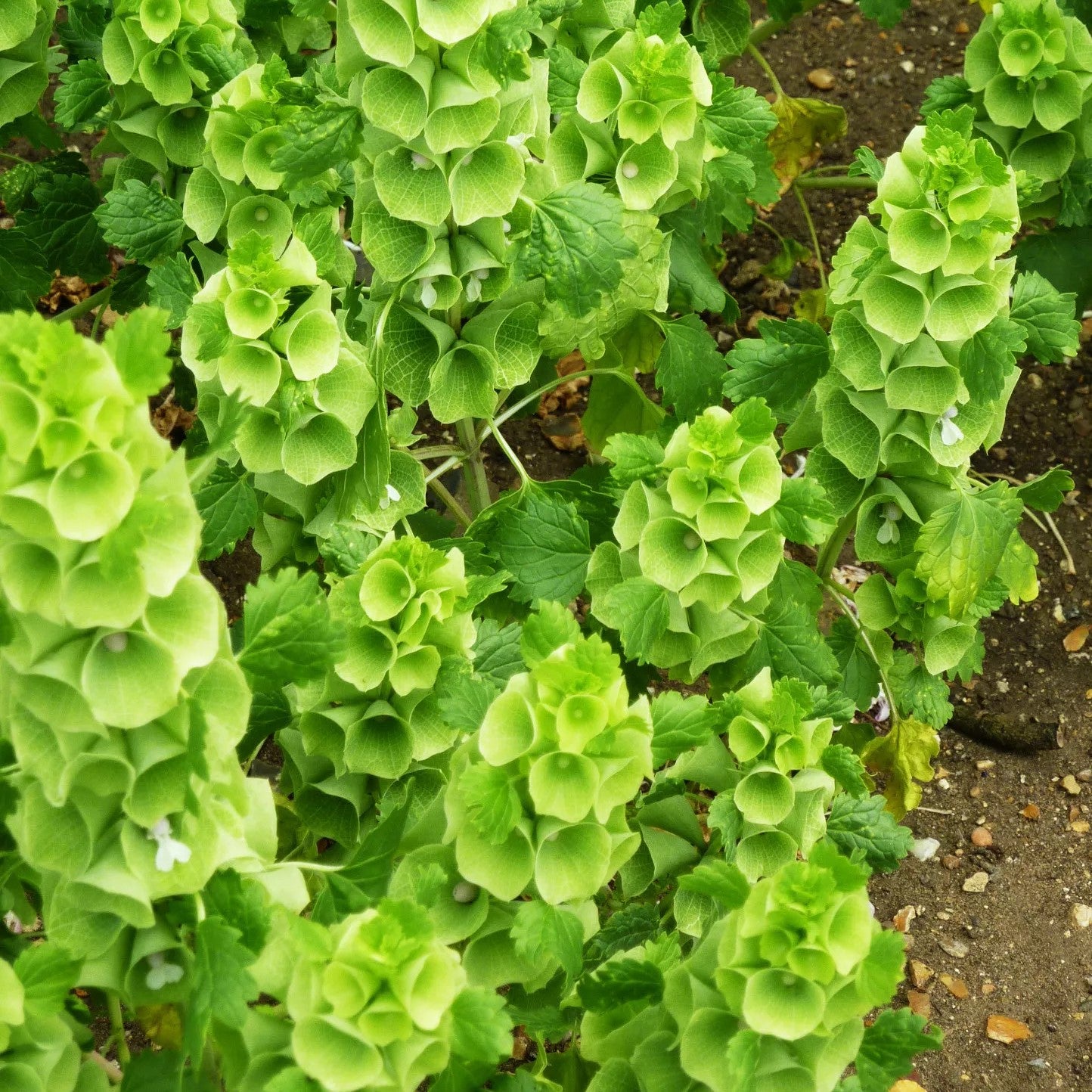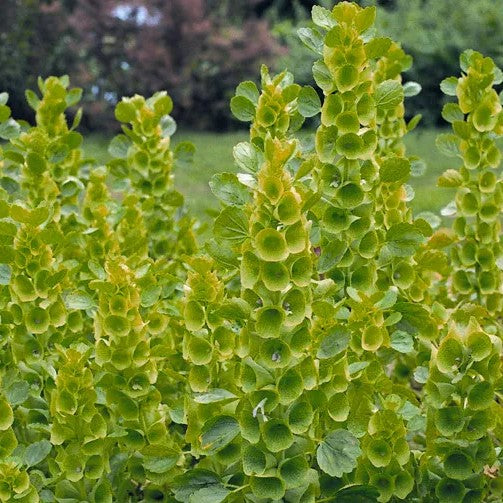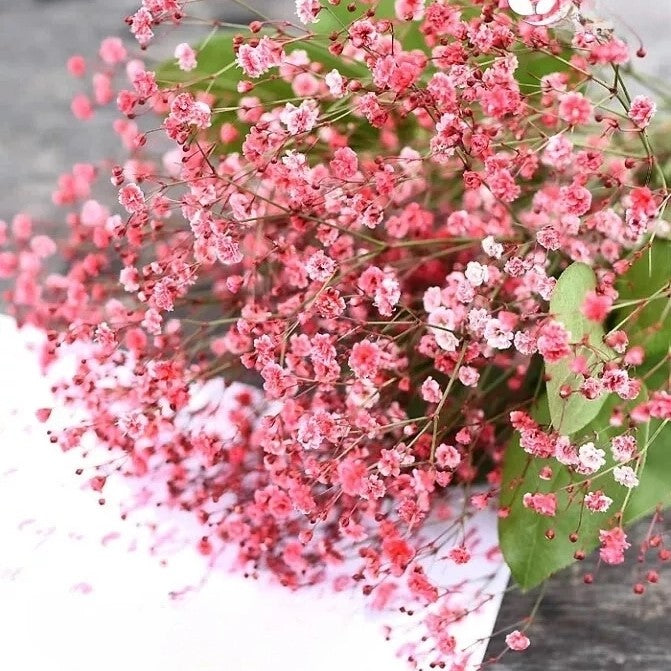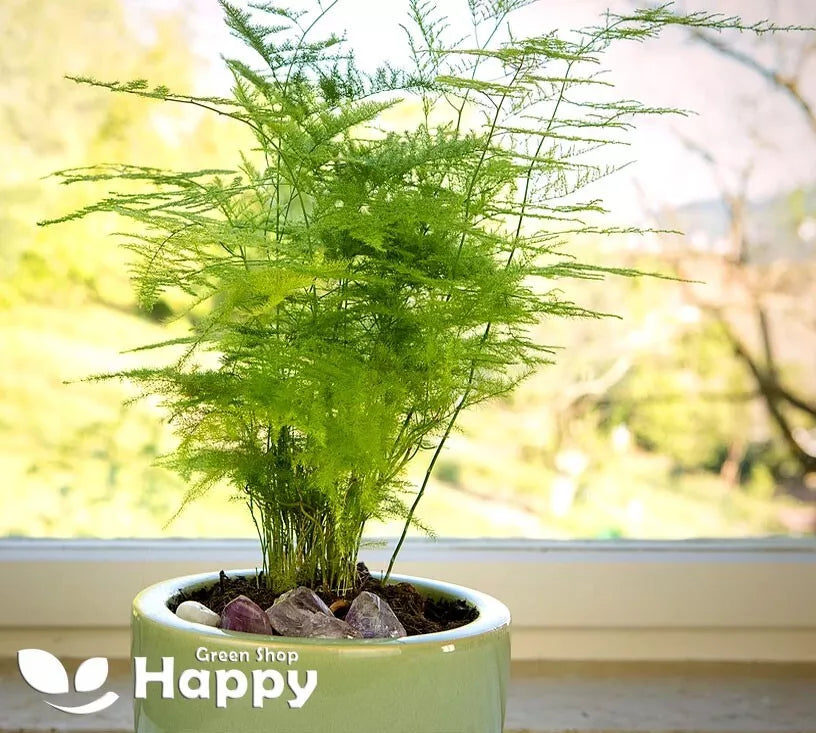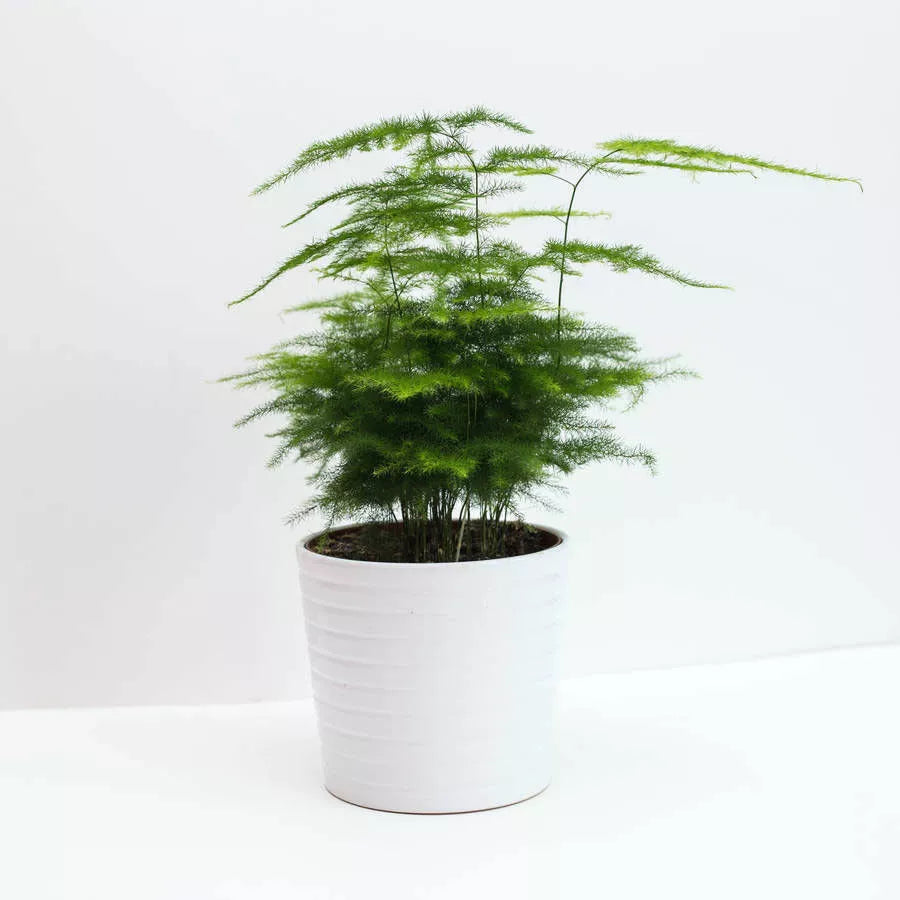Sort by:
211 products
211 products
Blue Lupine – Seeds (Lupinus angustifolius)
Blue Lupine (Lupinus angustifolius) is a stunning annual or short-lived perennial producing tall spikes of vivid blue pea-like flowers. Blooming from late spring to early summer, it adds vertical interest and vibrant color to borders, cottage gardens, and mixed flower beds. Hardy and easy to grow, this variety attracts bees and butterflies, making it perfect for pollinator-friendly gardens and long-lasting summer displays.
Why Grow "Blue Lupine"
-
Tall spikes of striking blue flowers
-
Long flowering season from late spring to early summer
-
Hardy, low-maintenance annual or short-lived perennial
-
Pollinator-friendly and adds vertical interest
Key Features
-
Type: Annual/Short-lived perennial (Lupinus angustifolius)
-
Height: 60–90 cm
-
Flowering: Late spring to early summer
-
Position: Full sun
-
Uses: Borders, cottage gardens, mixed flower beds, pollinator gardens
Ideal For
-
Vertical color in borders and mixed beds
-
Cottage-style gardens
-
Pollinator-friendly planting schemes
-
Long-lasting summer floral displays
Sowing & Growing
-
Sow indoors: February–April in trays or pots
-
Sow outdoors: April–May after frost
-
Germination: 14–21 days at 18–22°C
-
Thin seedlings 25–30 cm apart
-
Prefers well-drained soil in full sun
-
Mulch in winter for protection in colder regions
Blue Lace Flower Seeds (Didiscus caeruleus / Trachymene caerulea)
The Blue Lace Flower is an elegant and delicate annual, much loved for its airy umbels of soft sky-blue blossoms. Each flower head resembles lacework, carried on long slender stems, making it ideal for cutting. With its light, lacy texture, this plant brings charm and movement to borders, cottage gardens, and wildflower-style plantings. It is also a superb choice for floral arrangements, both fresh and dried.
What Makes It Special
-
Produces lace-like umbels of pastel blue blooms
-
Excellent cut flower with a long vase life
-
Attractive to bees, butterflies, and pollinators
-
Adds a soft, romantic touch to borders and bouquets
Key Features
-
Botanical name: Didiscus caeruleus / Trachymene caerulea
-
Common name: Blue Lace Flower
-
Seed count: Approx. seeds per pack
-
Height/Spread: 45–60 cm tall, 20–30 cm spread
-
Position: Full sun, well-drained soil
-
Flowering period: Summer to early autumn
-
Lifespan: Half-hardy annual
Ideal For
-
Cottage gardens
-
Wildflower meadows
-
Borders and mixed beds
-
Cut flower and dried arrangements
-
Pollinator-friendly gardens
Sowing Instructions
-
When to sow: March–May indoors, or April–June outdoors after frost has passed
-
How to sow:
-
Sow seeds thinly in trays with seed compost or directly outdoors in fine soil
-
Lightly cover seeds with a thin layer of soil or vermiculite
-
Keep moist until seedlings appear (14–21 days)
-
-
Transplant/Thin: Space plants 20–30 cm apart
-
Care: Deadhead to prolong flowering; provide support in windy sites
Bishop’s Flower ‘Queen Anne’s Lace’ Seeds (Ammi majus)
Add delicate elegance to your garden with Bishop’s Flower ‘Queen Anne’s Lace’ (Ammi majus). This annual produces airy, lacy white umbels on tall, graceful stems, perfect for borders, meadows, and cutting gardens. Easy to grow and long-flowering, it attracts pollinators and adds a classic cottage garden charm.
How to Grow
-
Sow directly outdoors in spring or indoors 4–6 weeks before the last frost.
-
Use well-drained soil in full sun.
-
Scatter seeds thinly on the soil surface and press lightly; do not cover.
-
Keep soil moist until germination (14–21 days).
-
Thin seedlings to 30–40 cm apart for healthy growth.
-
Cut flowers regularly to encourage continuous blooming.
Key Features
-
Airy, lacy white umbels on tall stems
-
Hardy annual, easy to grow and long-flowering
-
Ideal for borders, meadows, and cutting gardens
-
Attracts bees, butterflies, and other pollinators
-
Classic cottage garden appeal
Ideal For
-
Flower borders and cottage gardens
-
Meadow-style plantings and naturalized areas
-
Cutting gardens for fresh bouquets
-
Pollinator-friendly landscapes
Sowing
-
Best time: Spring outdoors or 4–6 weeks earlier indoors
-
Germination: 14–21 days
-
Sow thinly on soil surface, press lightly, do not cover
-
Prefers full sun and well-drained soil
Quick Tip
-
For a longer flowering season, sow in successive batches every 2–3 weeks.
Bird’s Eyes – Seeds
(Gilia tricolor)
Bird’s Eyes (Gilia tricolor) is a delightful annual wildflower producing masses of small, trumpet-shaped blooms in shades of purple, lavender, and cream with golden throats. Compact and bushy, this variety creates cheerful, nectar-rich displays that attract bees and butterflies, perfect for naturalistic plantings and wildflower gardens.
Why Grow Bird’s Eyes?
-
Charming pastel blooms with golden centers
-
Compact and easy to grow annual
-
Excellent for pollinators
-
Long flowering season for summer color
Key Features
-
Type: Hardy annual
-
Height: 20–40 cm
-
Flowers: Late spring to summer
-
Position: Full sun
-
Soil: Light, sandy, well-drained
Ideal For
-
Wildflower gardens and meadows
-
Cottage garden borders
-
Pollinator-friendly planting
-
Containers and small garden spaces
Sowing & Growing
-
Sow outdoors: March–May or in autumn where they are to flower
-
Germination: 14–21 days at 15–20°C
-
Thin seedlings to 15–20 cm apart
-
Care: Prefers poor soils, minimal feeding required
Bells of Ireland – Striking Green Spires for Garden and Bouquets
Bells of Ireland (Molucella laevis) produces tall, elegant green spires adorned with cup-shaped calyces, perfect for adding vertical interest to garden beds or floral arrangements. These hardy annuals are easy to grow and provide a unique, fresh green accent that lasts in bouquets.
What Makes It Special
-
Tall, elegant green spires
-
Unique cup-shaped calyces
-
Long-lasting in fresh or dried arrangements
-
Adds vertical interest to gardens and floral displays
Key Features
-
Hardy annual
-
Grows 60–90 cm tall
-
Blooms in mid to late summer
-
Thrives in full sun with well-drained soil
-
Excellent for cutting and drying
Ideal For
-
Garden borders and beds
-
Cut flowers and bouquets
-
Floral arrangements and decorations
-
Adding unique greenery to landscapes
Sowing
-
Sow indoors 6–8 weeks before last frost or direct outdoors after frost
-
Plant seeds 0.5–1 cm deep
-
Germination: 14–21 days at 18–22°C
-
Space 20–30 cm apart
-
Water moderately and ensure full sun
Baby’s Breath Mix – Airy, Delicate Blooms
Baby’s Breath Mix offers clouds of tiny, delicate flowers on fine, airy stems. Perfect for borders, cottage gardens, and floral arrangements, these elegant annuals add a soft, romantic touch to any garden or bouquet.
What Makes It Special
-
Airy, delicate flower clusters
-
Long-lasting blooms
-
Ideal for cut flowers and arrangements
-
Adds elegance to garden beds and borders
Key Features
-
Annual plant
-
Grows 30–50 cm tall
-
Blooms from early summer to autumn
-
Thrives in full sun and well-drained soil
-
Low-maintenance and hardy
Ideal For
-
Garden borders and cottage gardens
-
Floral arrangements and bouquets
-
Rock gardens and pathways
-
Pollinator-friendly gardens
Sowing
-
Sow directly outdoors after last frost
-
Plant seeds 0.3–0.5 cm deep
-
Germination: 10–14 days at 18–22°C
-
Space 20–25 cm apart
-
Water moderately and provide full sun
Baby’s Breath Crimson – Romantic Red Blooms
Baby’s Breath Crimson produces vibrant crimson clusters on delicate, airy stems. Perfect for adding bold color to borders, cottage gardens, and floral arrangements, these elegant annuals create a stunning display.
What Makes It Special
-
Rich crimson, airy flower clusters
-
Long-lasting blooms
-
Perfect for cut flowers and arrangements
-
Adds vibrant color and elegance to any garden
Key Features
-
Annual plant
-
Grows 30–50 cm tall
-
Blooms from early summer to autumn
-
Thrives in full sun and well-drained soil
-
Low-maintenance and hardy
Ideal For
-
Garden borders and cottage gardens
-
Floral arrangements and bouquets
-
Rock gardens and pathways
-
Pollinator-friendly gardens
Sowing
-
Sow directly outdoors after last frost
-
Plant seeds 0.3–0.5 cm deep
-
Germination: 10–14 days at 18–22°C
-
Space 20–25 cm apart
-
Water moderately and provide full sun
Aster "Color Carpet Mix" – Seeds
(Callistephus chinensis)
Aster "Color Carpet Mix" is a charming dwarf variety that produces a vivid carpet of colorful blooms in late summer and autumn. With compact, bushy growth and daisy-like flowers in shades of pink, purple, red, blue, and white, this mix is perfect for brightening borders, rockeries, and container displays. Long-lasting blooms make them excellent for cutting, bringing cheer indoors as well.
Why Grow Aster "Color Carpet Mix"?
-
Compact, bushy habit with masses of blooms
-
Vibrant mix of summer and autumn colors
-
Long flowering season
-
Great for edging, containers & small gardens
Key Features
-
Type: Half-hardy annual
-
Height: 20–25 cm
-
Blooms: July–October
-
Position: Full sun or partial shade
-
Soil: Well-drained, fertile soil
Ideal For
-
Bedding & edging
-
Rock gardens and low borders
-
Patio containers
-
Cut flower arrangements
Sowing & Growing
-
Sow indoors: February–April, in trays or pots, lightly covering seeds
-
Transplant seedlings outdoors after frost, spacing 20 cm apart
-
Sow outdoors: May, directly where they are to flower
-
Germination: 10–14 days at 18–21°C
-
Remove faded blooms to extend flowering season
Asparagus fern `Plumosus nanus` - 10 seeds (Asparagus setaceus plumosus nanus)
£1.85
Unit price perAsparagus fern `Plumosus nanus` - 10 seeds (Asparagus setaceus plumosus nanus)
£1.85
Unit price perAsparagus Fern ‘Plumosus Nanus’ Seeds (Asparagus setaceus plumosus nanus)
Asparagus Fern ‘Plumosus Nanus’ is a delicate, feathery perennial with fine, airy foliage that adds texture and elegance to gardens, containers, and hanging baskets. Hardy and versatile, it can be grown in sun or partial shade and makes an excellent filler or accent plant in borders and floral arrangements.
What Makes It Special
-
Fine, feathery foliage with soft, elegant texture
-
Hardy, versatile, and low-maintenance
-
Ideal for borders, containers, and hanging baskets
Key Features
-
Botanical name: Asparagus setaceus plumosus nanus
-
Perennial (often grown as annual in colder climates)
-
Height: 30–60 cm
-
Bloom time: Summer (small inconspicuous flowers)
Ideal For
-
Borders, containers, and hanging baskets
-
Filler or accent plant in flower arrangements
-
Indoor or outdoor ornamental foliage
Sowing
-
Sow indoors Feb–Apr
-
Cover seeds lightly with soil
-
Germination: 14–28 days at 18–22°C
-
Space seedlings 20–30 cm apart
-
Foliage develops as plant matures
Showing 207/211

